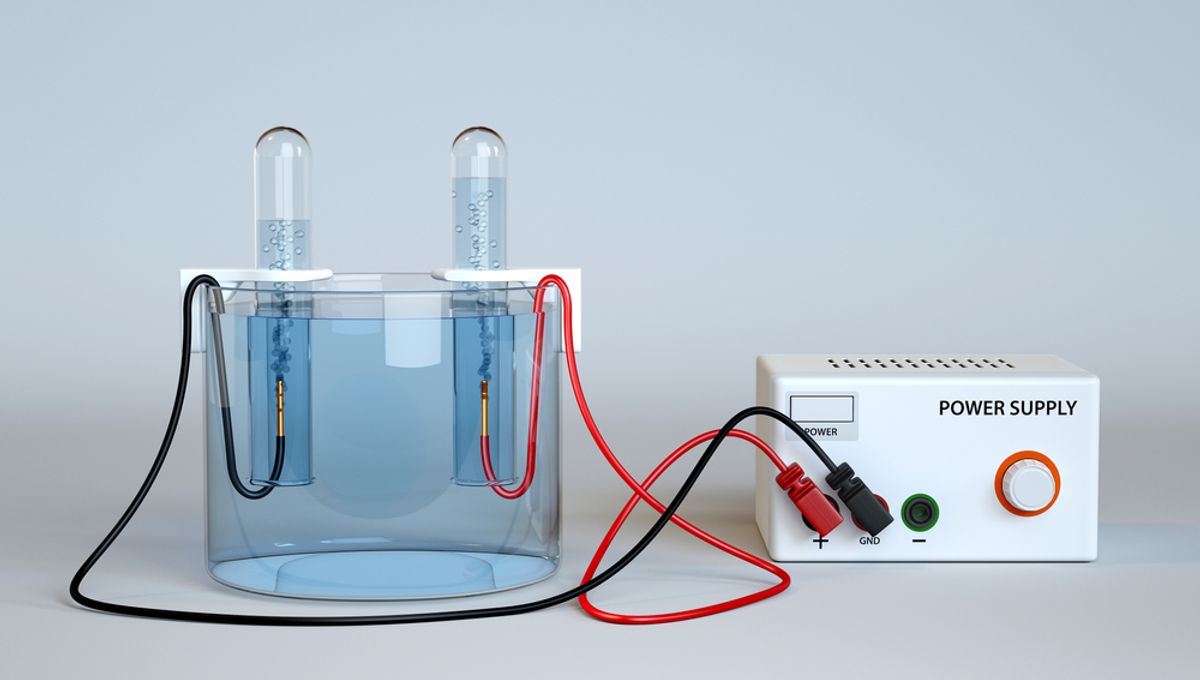
A model for how protons pass through water has been vindicated using X-ray spectroscopy. Astonishingly, the model it replaces dates back to 1806, despite the fact protons were not discovered until more than 100 years later.
In the early 19th Century, the discovery of the electric cell made many experiments in electricity possible, but observation ran ahead of theory. Having discovered electrolysis, scientists struggled to explain how electric current could pass through water. Remarkably, Theodor Grotthuss provided a solution that has proven exceptionally enduring, despite the immense gaps in his knowledge.
Nevertheless, physical chemists have long known Grotthuss’ explanation requires modification. In 2005, Professor Ehud Pines of Ben-Gurion University of the Negev presented his advance on the Grotthuss mechanism but struggled to win acceptance for his proposal. Now, however, a paper published in Angewandte Chemie provides support for Pines’ theory, and he hopes it will finally win over the doubters.
According to Grotthuss, charge is passed from one water molecule to another like buckets between people seeking to quench a fire before the development of the hose. Not only did Grotthuss not know about protons, he (like his contemporaries) thought the chemical formula for water was HO, not H2O. Nevertheless, what has come to be known as “proton hopping” has remained the basis for scientific thinking about why protons diffuse so easily in an electric field in the face of water molecules’ random motions.
Pines has a more sophisticated version, in which each proton creates a train of three water molecules. Like Grommit in The Wrong Trousers, Pine proposes the trains “build the tracks” ahead of them, allowing them to move through water as if on rails, and disassemble the track behind them in order to rebuild.
Pine acknowledges he is not the first to propose something along these lines but claims to have identified the true molecular structure formed by the proton’s train.
“The debates on the Grotthuss mechanism and the nature of proton solvation in water have grown heated,” Pines said in a statement, “as this is one of the most basic challenges in chemistry. Understanding this mechanism is pure science, pushing the boundaries of our knowledge and changing one of our fundamental understandings of one of nature’s most important mass and charge transport mechanisms.”
In the face of such doubt, Pines put together a team that developed custom-made flatjet X-ray equipment to observe the passage of protons through water. In a recognition of the importance with which the topic is regarded among chemists, the equipment alone cost millions of dollars, but the European Research Council considered it worth the investment.
The experiment revealed that each proton changes the electron structure of the oxygen atoms in three water molecules, but to different extents, creating a three-molecule train, with much weaker effects on more distant molecules.
“Everyone thought about this problem for over 200 years, so that was a sufficient challenge to me to decide to take it up,” Pines said. “Seventeen years later, I am gratified to most likely have found and demonstrated the solution.”
University chemistry books still use the Grotthuss Mechanism to explain a proton’s progress in water, and replication may be required before they shift to the “Pines Mechanism”. Nevertheless, the paper increases the chances a fundamental advance has been made.
With electrolysis carrying a great deal of the world’s hopes for a low carbon future, anything that contributes to a better understanding could be precious. The mechanism could also lead to improvements in hydrogen fuel cells and membrane design.
The paper is published in Angewandte Chemie.
Source Link: Passage Of A Proton Through Water Solves A 200-Year-Old Mystery